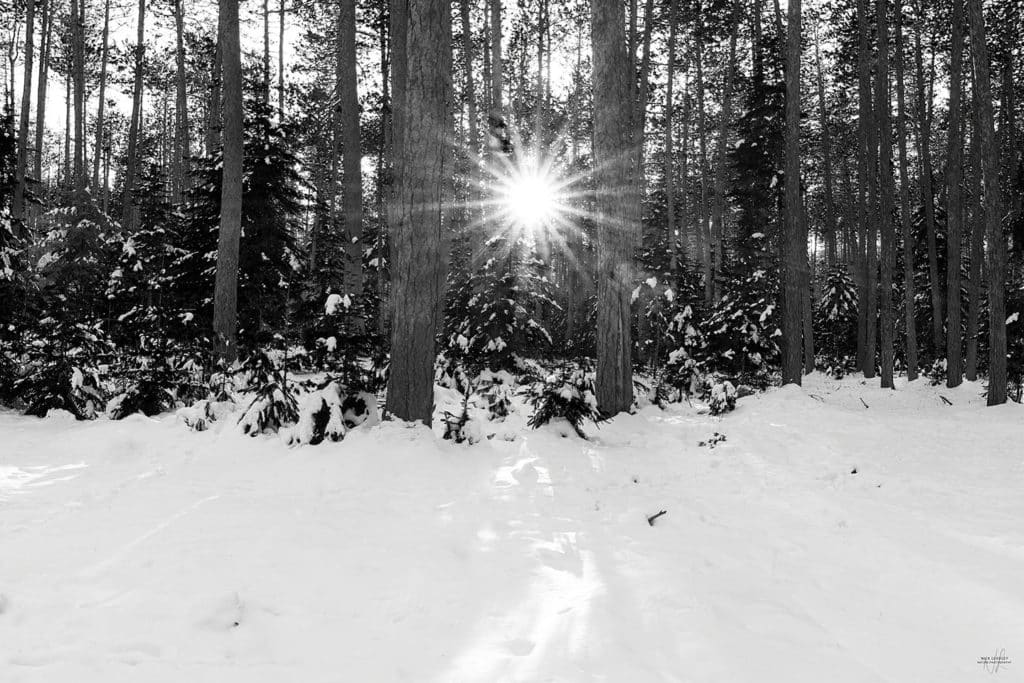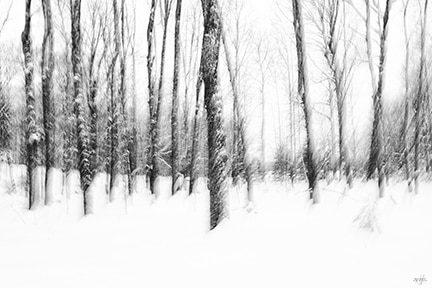
Welcome back to Through the Lens with Nick Leadley, our continuing series on wildlife photography. Read the rest of the series here, and see more of his work at Touch The Wild.
A fresh dusting of snow. Trees partially block the light of the sun. I’m in a landscape photography spot I have not been to for some time.
Locations for scenic photographs change with each season and each passing year. It’s always easy to see the area with fresh eyes.
When I use the term “landscape,” I am not necessarily referring to a grand, sweeping view. Sometimes smaller locations offer unique opportunities photographically.
Often when visiting a new location, or one I have not been to for a while, I spend time exploring. Looking around allows me to clear my head and think like a photographer. Sometimes I stand in one spot and slowly turn in a circle, visually taking in the entire scene.
What do I look for in a landscape location? At first, the answer is nothing at all. That means I often go in with no preconceived idea for a photograph. Think of the psychology term tabula rasa, meaning “blank slate.” Now you can see the photographic possibilities. React to a scene with your heart, then your head.
Once I find a spot that looks interesting, I start considering the details. What are some of the dominant features? Where do I want to place them in the frame? Are there areas of contrasting tones that allow those features to stand out? Will the scene create an intense black and white image?
Other items on the checklist include distracting elements in the picture that need to be removed from or minimized in the composition. Are there any vital vertical or horizontal elements that lend to creating a more robust image? Is there a particular portion of the scene that is visually more interesting than others? Where are the leading lines?

The image titled “Cathedral Pines” includes a number of the items above. The photograph titled “Ghost Trees” covers the points in the next paragraph.
Then consider any creative techniques that take the picture to a different level. Perhaps a slow shutter speed combined with camera movement. Or an intentional exposure adjustment to create a different mood in the image. Do not feel the need to capture all of the significant elements in the picture. Include what is needed to make the photograph exciting and stop there.
Now go have fun and look at a familiar scene in a new way.
